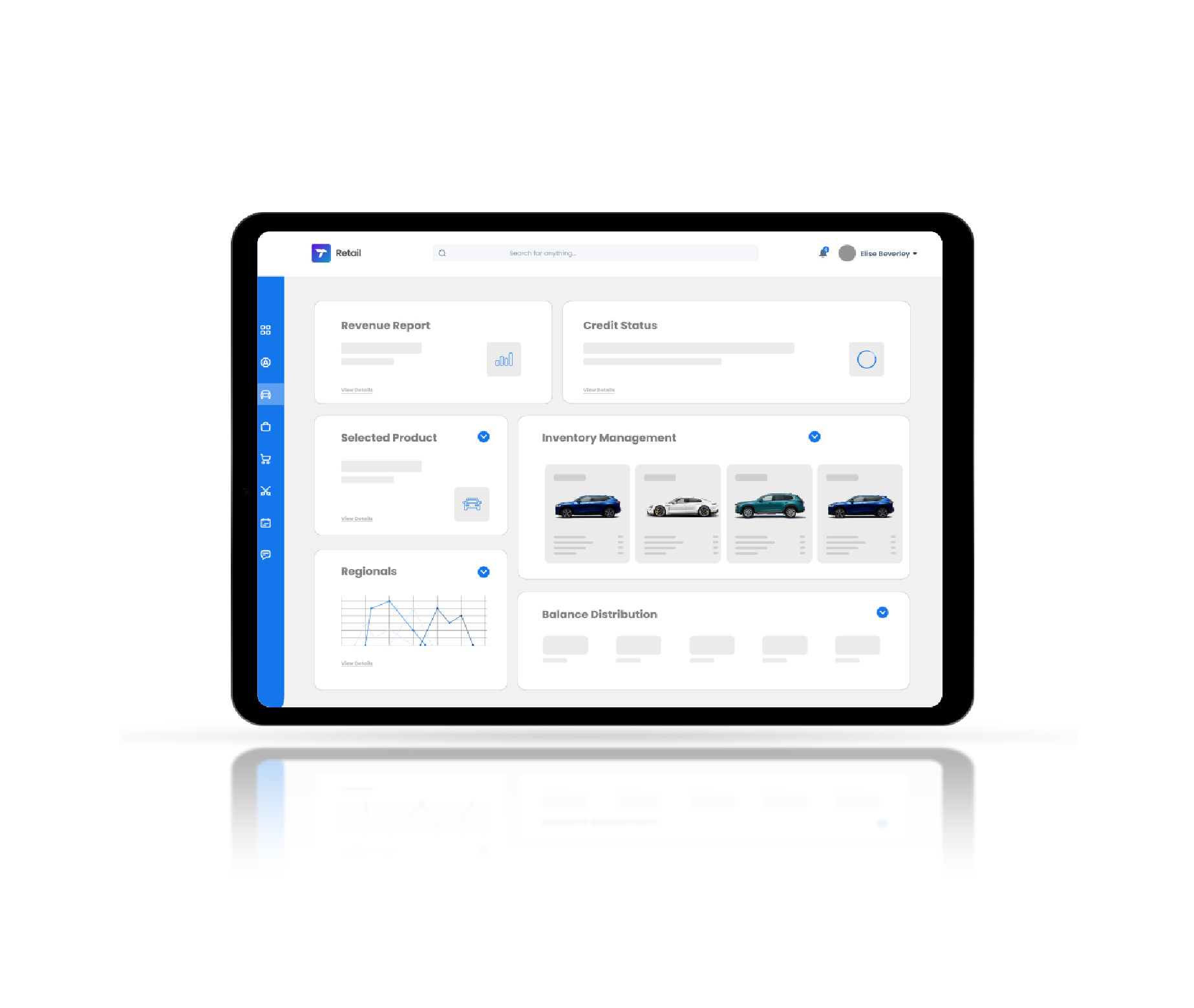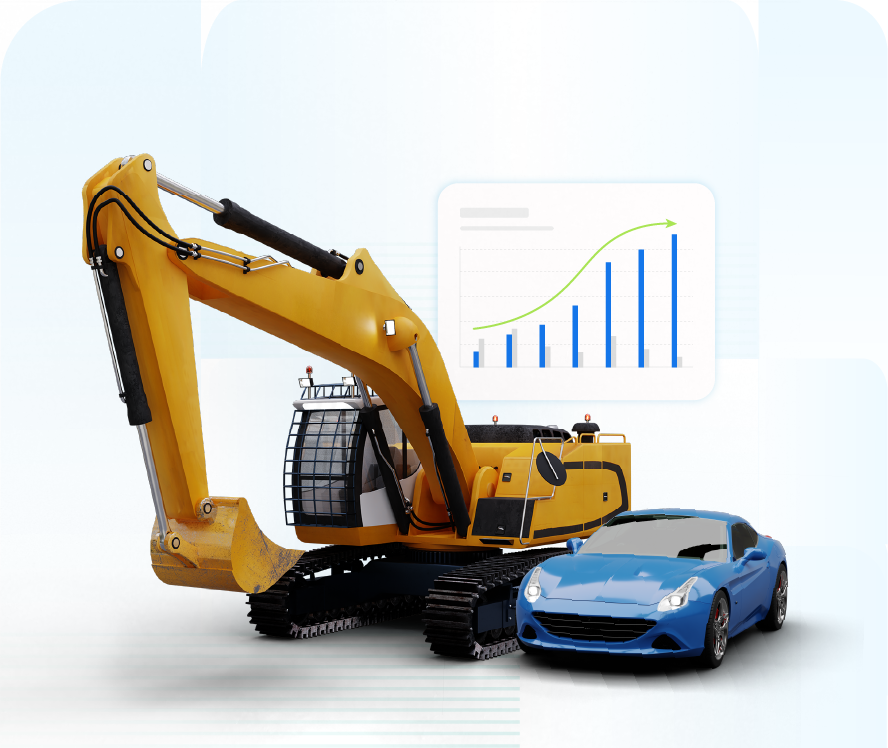Blog
The effect of Electric Vehicles (EVs) on the US auto-leasing market
By Peter Minshall, on January 8, 2025
The rise of EVs is reshaping the US auto-leasing market, driving new trends, challenges, and opportunities for automakers, leasing companies, and consumers.

While there are unavoidable hurdles affecting the widespread
adoption of EVs, it is undeniable that these ever-expanding options are
affecting the auto-retail market despite these challenges. As the EV market
grows, it is also beginning to disrupt established norms in the auto-leasing
sector. Leasing companies and consumers alike face new challenges and
opportunities, from uncertainties around residual values to the impact of
charging infrastructure and evolving consumer preferences. These changes are forcing
automakers, leasing companies, and financial institutions to adapt quickly to
keep pace with the growing shift towards EVs.
The current state of the US auto-leasing market
The US auto-leasing market has become an essential segment
of the automotive industry, offering consumers a flexible and cost-effective
alternative to traditional car ownership. In the US, in recent years, over 25%
of new car transactions, and 46% of EV purchases specifically, have been
leases.
The current leasing market
The rising cost of new cars has made leasing an attractive
option for budget-conscious consumers while dealerships benefit from higher
turnover of vehicles, ensuring that newer models are constantly introduced to
the market.
Millennials and Gen Z consumers often prioritize flexibility
and technological advancement, making leasing a favorable option that aligns
with their lifestyle. In urban areas, leasing is particularly popular due to
the shorter distances driven and the desire for smaller, more eco-friendly
vehicles, which tend to have better leasing terms.
Key players
The auto-leasing market in the US is dominated by a few key
players. Major automakers such as General Motors, Ford, and Toyota offer
extensive leasing programs through their in-house financing arms. These
automakers often promote leasing to drive sales of new models and maintain a
competitive edge by keeping consumers within their brand ecosystem.
In addition to the automakers, third-party leasing companies
and financial institutions also play a significant role in the market. Some
companies offer leasing options across multiple brands, allowing for greater
flexibility for consumers. These third-party lessors often target customers who
may be of a lower credit-tier or who are looking for more personalized leasing
solutions.
Overall, the US auto-leasing market has established itself
as a vital part of the ecosystem. However, as the industry begins to embrace
EVs, significant changes are expected in leasing models, consumer preferences,
and how companies approach the market.
The rise of EVs in the US auto market
Electric vehicles have been gaining significant traction in
the US automotive market, driven by a combination of environmental concerns,
technological advances, and supportive government policies. What was once a
niche market has now become a central focus for many automakers, leading to a
rapid expansion in both the variety and availability of EV models. The growing
popularity of EVs is not only reshaping the auto sales landscape, but also
influencing leasing dynamics, as consumers consider leasing to access the
benefits of this emerging technology without long-term commitment.
Growth of the EV market
The US EV market has seen measurable growth in the past
decade. In 2023, EVs accounted for around 8% of all new car sales, an increase
from 6% the previous year. This number is expected to increase as both
automakers and governments push for greener transportation solutions.
A key factor behind the rise of EVs is the increasing
availability of federal and state incentives. For example, the federal
government offers a tax credit of up to $7,500 for the purchase or lease of
qualifying EVs. Several states provide their own incentives, such as rebates or
access to carpool lanes. These incentives have made leasing an EV more
affordable and attractive to a broader range of consumers.
EVs vs. traditional combustion engines
One of the most significant benefits is EVs long-term
operating costs. EVs have fewer moving parts than ICE vehicles, resulting in
lower maintenance expenses. Additionally, electricity is generally cheaper than
gasoline, further reducing the cost of ownership.
However, challenges remain. The most cited concerns are
range anxiety—the fear of running out of charge before reaching a destination
or the next charging station. There are also concerns around the rapid
depreciation of EVs, particularly around the battery pack.
How EVs are impacting auto-leasing models
The fundamental differences between electric and ICE
vehicles—particularly in terms of technology, depreciation, and
infrastructure—are reshaping the way leases are structured, priced, and
marketed.
Challenges in leasing EVs
One of the most critical aspects of vehicle leasing is
predicting the vehicle’s residual value—its worth at the end of the lease term.
For traditional vehicles, residual values are relatively predictable and are
based on years of data. However, the rapid pace of technological advancement in
EVs makes estimating their future value far more complex. The dominance of one
OEM (Tesla) in the market and its pricing volatility is, without doubt, a major
challenge for the industry.
This uncertainty has led many leasing companies to offer
shorter-term leases more lenient mileage limits on EVs compared to traditional
cars, allowing them to reduce the risk of depreciation, technology obsolescence
and customer range anxiety. In some cases, automakers have introduced programs
that allow customers to swap or upgrade their EVs midway through their lease
term, offering flexibility in response to rapid innovation.
Incentives and cost adjustments
Leasing EVs has become more affordable for consumers thanks
to various federal and state incentives. The federal government offers tax
credits of up to $7,500 for qualifying EVs, and while this incentive typically
applies to purchases, it also reduces the cost of leasing since the credit can
be factored into the lease pricing. Additionally, many states offer their own
incentives, such as rebates or grants, further lowering the monthly payments
for leased EVs.
The Federal and State incentives have encouraged automakers
and leasing companies to create attractive lease deals to promote EV adoption;
Tesla – the dominant player in the market, Chevrolet and Nissan have all
utilized them to promote leasing options.
Automaker support and flexibility
To further encourage EV adoption amongst uncertain buyers,
many automakers are offering unique leasing programs tailored specifically for
electric vehicles. For instance, some manufacturers are incorporating flexible
lease options that allow consumers to swap between EVs and ICE vehicles during
the lease term, providing a sense of security to consumers who may not yet be
ready to fully commit to an electric-only future.
Additionally, automakers are investing in their own leasing
arms to support the growth of EV leases. By controlling the leasing process,
manufacturers can take more significant risks with residual values and offer
more competitive terms to attract customers.
Shifting consumer behavior and preferences due to EVs
This rise of EVs is affecting consumer behavior in the US,
as most people embrace the benefits of EV technology, their preferences and
expectations are evolving, particularly around sustainability, cost efficiency,
and access to the latest technology.
The younger generation is predictably leading the charge
towards both EV usage and leasing options. The flexibility offered by leasing
options is a key factor for younger demographics, with subscription-based
leasing models increasing in popularity among Millennial and Gen Z consumers.
Urban consumers are more likely to lease electric vehicles
than their suburban or rural counterparts due to several factors, including
access to charging infrastructure, shorter driving distances, and stricter
emission regulations in cities. Many urban areas have invested heavily in
public charging stations, but suburban and rural consumers face more limited
availability of charging infrastructure. Range anxiety remains a concern,
particularly in less densely populated regions where public charging stations
are sparse.
Automakers and leasing companies are working to address
these concerns by partnering with charging providers to install more stations
in suburban and rural areas, and by offering leasing deals that include
charging incentives or at-home charger installations.
Long-term cost considerations
While electric vehicles currently have a higher upfront
price than traditional cars, leasing mitigates this cost barrier by spreading
payments over a shorter term and often incorporating incentives into the lease.
Additionally, EVs have lower operational costs compared to ICE vehicles, thanks
to reduced maintenance needs and lower fuel costs.
However, while operational savings are an important factor,
some consumers remain hesitant to commit to long-term EV ownership due to
concerns about the pace of technological advancements. Leasing allows them to
sidestep this issue. This flexibility to stay at the cutting edge of automotive
technology is a major selling point for EV leasing compared to buying.
Industry adaptions and future trends
Automaker strategies and EV leasing programs
Many automakers are now catering to the specific needs of
electric vehicle leasing software customers by designing leasing programs that provide consumers
with greater flexibility, allowing them to upgrade their vehicles more
frequently, increasingly via a subscription model. This approach not only
appeals to tech-savvy consumers who want the latest innovations but also
mitigates concerns over the obsolescence of EV technology.
Leasing companies adapting to EVs
A major challenge faced by auto-leasing companies is
predicting the residual value of electric vehicles, which can be more volatile
than that of traditional cars due to new vehicle pricing volatility, rapidly
advancing technology, and battery life concerns. Lessors are now using
data-driven tools and algorithms to better assess the depreciation of EVs.
Lessors are also managing EV lease terms to address
uncertainty over technology obsolescence – shorter and more flexible regarding
vehicle switching or early termination.
Collaboration with charging infrastructure providers is
another tool to offer incentives for consumers who lease EVs. These
partnerships may include discounted access to public charging networks, home
charging installation packages, or credits toward charging costs making EVs a
more attractive option for a wider range of consumers.
Future trends in the EV leasing market
Looking ahead, several trends are expected to shape the
future of the EV leasing market. First, as more states push for aggressive
emission reduction goals, leasing companies and automakers will likely continue
to introduce EV-specific incentives and programs. Some states, like California,
have committed to phasing out new gasoline-powered vehicles by 2035, and are
expected to lead the way in promoting EV leasing as a mainstream option for
consumers.
Finally, as the cost of EV batteries continues to decline
and automakers achieve greater economies of scale, the upfront price difference
between electric and traditional vehicles will narrow. This will make leasing
an EV more cost-competitive with ICE vehicles, further accelerating the shift
toward electric mobility.
Conclusion
The rise of EV usage is transforming the US auto-leasing
market, driving changes in leasing models, consumer preferences, and industry
strategies. As EV adoption grows, automakers and leasing companies are adapting
by offering more flexible lease terms, integrating new technologies to predict
residual values, and collaborating with charging infrastructure providers to
enhance customer convenience.
Younger generations of consumers are increasingly choosing
EV leases due to lower financial commitments, access to the latest technology,
flexibility, and environmental concerns. While challenges remain, the market is
poised for further growth as these various issues are addressed.
Looking forward, the continued expansion of EV technology and charging infrastructure, coupled with declining costs, will make EV leasing an even more attractive option, ultimately shaping a more sustainable and technologically advanced future for auto-retail in the US.
Related blogs

Blog
Intelligent deal structuring: The new standard in digital retail platforms

Blog
Transforming BFSI with data engineering: Unlocking actionable insights from big data

Blog



